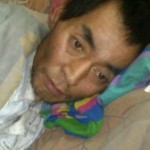Tenzin Choedak, a Tibetan political prisoner who was serving a 15-year prison term in Chushur Prison near Lhasa, died on December 5 just six years into his sentence after being subjected to severe beatings and torture. Two days prior to his death, Tenzin Choedak, also known as Tenchoe, was released to his family in such a poor condition that he was said to be unrecognisable.
Tenchoe was a former student of the Upper Tibetan Children’s Village school in Dharamsala in India. He had escaped from Tibet in 1990, but returned there when he joined a European non-government organisation affiliated with the Red Cross.
Although physical punishment and all forms of cruel, inhumane or degrading treatment are strictly prohibited by the United Nations Standard Minimum Rules for The Treatment of Prisoners, it is not uncommon for detainees to die in Chinese prisons, or soon after their release, due to physical injuries sustained while in custody.
Earlier this year, another brutally tortured political prisoner, Goshul Lobsang, died following his early release. Such incidents give credence to speculation that prison officials might be releasing prisoners in order to escape blame for premature deaths.
According to Tibet’s Last Stand? : The Tibetan Uprising of 2008 and China’s Response, which has been described as a “definitive reference from the foremost writer on Tibetan political history”, “Security personnel often took the opportunity to beat Tibetans, especially monks and nuns, with violence intended to inflict permanent damage to skulls, bones, or internal organs. In detention it appears that almost all Tibetans were beaten, often severely and sometimes fatally. Several Tibetans were released from prisons or detention centres in such condition that they soon died, a common tactic of officials who did not want to be responsible for prisoners dying in their custody.” Tibet’s last stand is written by Warren W Smith, a researcher and writer with the Tibetan Service of Radio Free Asia.
Many prisoners who do not die following an early release are said to have been reduced to a mere shadow of their former selves. It appears that the Chinese authorities feel secure in releasing them as they no longer pose such a threat. Many face life-long health complications including hepatitis, spinal injury and paralysis, damaged eyesight, and psychological problems. Thus, contrary to how it may seem, the early release of prisoners is not often due to some sort of leniency.








 Print
Print Email
Email